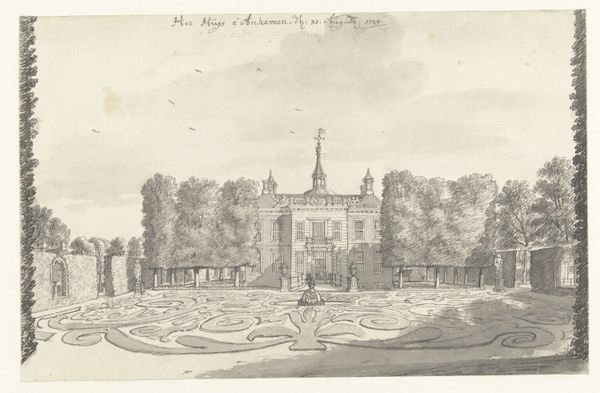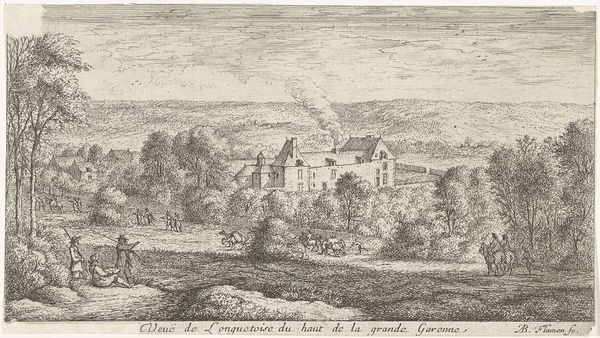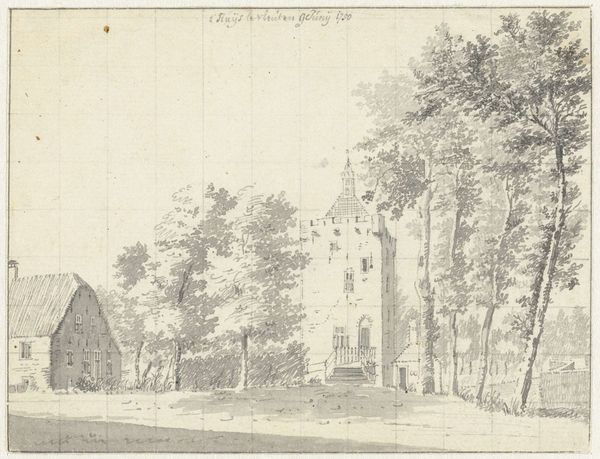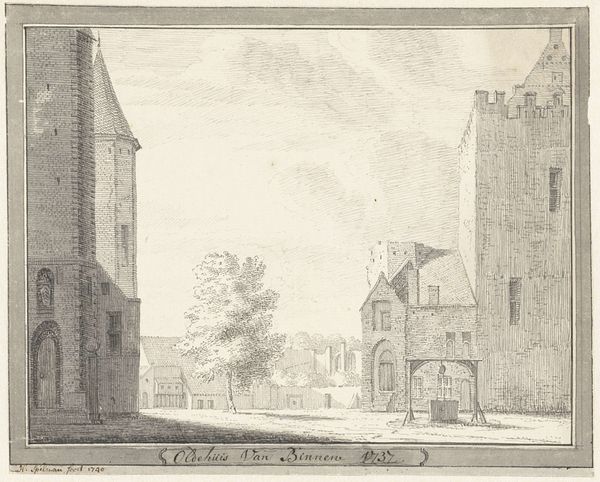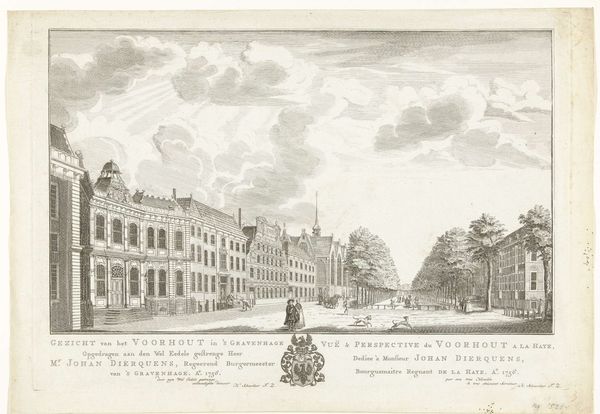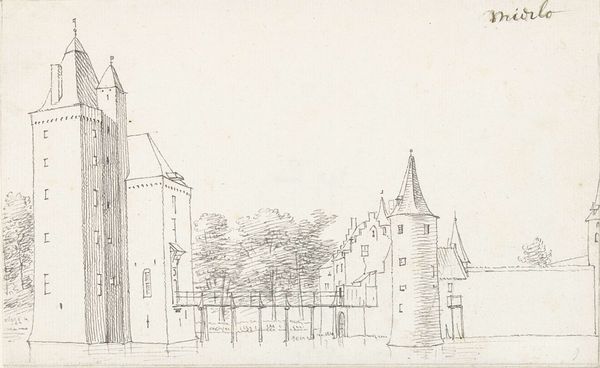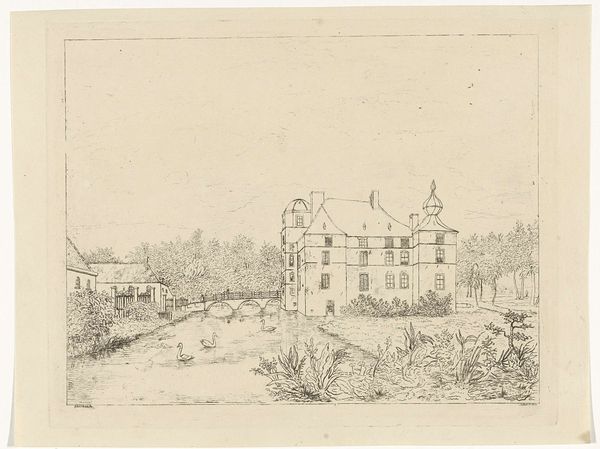
#
landscape illustration sketch
#
light pencil work
#
quirky sketch
#
pen sketch
#
pencil sketch
#
old engraving style
#
personal sketchbook
#
sketchwork
#
pen-ink sketch
#
sketchbook drawing
Dimensions: height 154 mm, width 240 mm
Copyright: Rijks Museum: Open Domain
This delicate drawing was made with graphite on paper by Jan de Beijer, who lived in the 18th century. Graphite, essentially a form of carbon, lends itself to precision, and here, it captures the geometrical layout of the garden, and the architecture in the distance. The choice of material and method here is crucial; it speaks volumes about the social context. It wasn't just a record of the property. This was a way of displaying status and wealth. A manicured garden like this represents a huge amount of labor, from the gardeners maintaining the precise shapes to the workers who originally built the architecture and landscape. Drawings like this would have circulated among a privileged class, celebrating their dominion over both the land and the people who worked it. It reminds us that even an image that seems simple can carry complex messages about labor, class, and power.
Comments
No comments
Be the first to comment and join the conversation on the ultimate creative platform.
